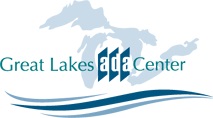Bill R Botten
Accessibility Specialist, Office of Technical and Information Services; U.S. Access Board
William (Bill) R. Botten, an Exercise Physiology graduate from the University of Kansas, joined the US Access Board in May of 2000. Previously, he was Director of the Office of Accessible Seating/Services for Centre Management, a national sports arena management company. His responsibilities included ensuring compliance with State and Federal accessibility requirements at all managed properties, as well as working with design and construction officials during arena construction and alterations. His training experience includes hundreds of presentations over the last 20 years to local, state, and national audiences on injury prevention, disability awareness and sensitivity, and accessibility issues. He was part of a team that developed the new combined guidelines for the Americans with Disabilities Act and the Architectural Barriers Act. Bill specializes in access issues related to recreation facilities and outdoor developed areas. He also provides technical assistance to the building design and construction industry as well as State and Federal agencies and consumers with disabilities.

